4-allyloxybenzaldehyde
Modify Date: 2024-01-04 11:59:23

4-allyloxybenzaldehyde structure
|
Common Name | 4-allyloxybenzaldehyde | ||
|---|---|---|---|---|
| CAS Number | 40663-68-1 | Molecular Weight | 162.18500 | |
| Density | 1.058 g/mL at 25 °C(lit.) | Boiling Point | 150-152 °C18 mm Hg(lit.) | |
| Molecular Formula | C10H10O2 | Melting Point | 150-152ºC | |
| MSDS | Chinese | Flash Point | >230 °F | |
| Symbol |

GHS07 |
Signal Word | Warning | |
| Name | 4-allyloxybenzaldehyde |
|---|---|
| Synonym | More Synonyms |
| Density | 1.058 g/mL at 25 °C(lit.) |
|---|---|
| Boiling Point | 150-152 °C18 mm Hg(lit.) |
| Melting Point | 150-152ºC |
| Molecular Formula | C10H10O2 |
| Molecular Weight | 162.18500 |
| Flash Point | >230 °F |
| Exact Mass | 162.06800 |
| PSA | 26.30000 |
| LogP | 2.06390 |
| Index of Refraction | n20/D 1.568(lit.) |
|
Section1. IDENTIFICATION OF THE SUBSTANCE/MIXTURE Product identifiers Product name: 4-Allyloxybenzaldehyde CAS-No.: 40663-68-1 Relevant identified uses of the substance or mixture and uses advised against Identified uses: Laboratory chemicals, Manufacture of substances Section2. HAZARDS IDENTIFICATION Classification of the substance or mixture Classification according to Regulation (EC) No 1272/2008 [EU-GHS/CLP] Skin sensitization (Category 1) Classification according to EU Directives 67/548/EEC or 1999/45/EC May cause sensitization by skin contact. Label elements Labelling according Regulation (EC) No 1272/2008 [CLP] Pictogram Signal wordWarning Hazard statement(s) H317May cause an allergic skin reaction. Precautionary statement(s) P280Wear protective gloves. Supplemental Hazardnone Statements According to European Directive 67/548/EEC as amended. Hazard symbol(s) R-phrase(s) R43May cause sensitization by skin contact. S-phrase(s) S36/37Wear suitable protective clothing and gloves. Other hazards - none Section3. COMPOSITION/INFORMATION ON INGREDIENTS Substances Formula: C10H10O2 Molecular Weight: 162,19 g/mol ComponentConcentration p-(Allyloxy)benzaldehyde CAS-No.40663-68-1- EC-No.255-027-2 Section4. FIRST AID MEASURES Description of first aid measures General advice Consult a physician. Show this safety data sheet to the doctor in attendance. If inhaled If breathed in, move person into fresh air. If not breathing, give artificial respiration. Consult a physician. In case of skin contact Wash off with soap and plenty of water. Consult a physician. In case of eye contact Flush eyes with water as a precaution. If swallowed Never give anything by mouth to an unconscious person. Rinse mouth with water. Consult a physician. Most important symptoms and effects, both acute and delayed To the best of our knowledge, the chemical, physical, and toxicological properties have not been thoroughly investigated. Indication of any immediate medical attention and special treatment needed no data available Section5. FIREFIGHTING MEASURES Extinguishing media Suitable extinguishing media Use water spray, alcohol-resistant foam, dry chemical or carbon dioxide. Special hazards arising from the substance or mixture Carbon oxides Advice for firefighters Wear self contained breathing apparatus for fire fighting if necessary. Further information no data available Section6. ACCIDENTAL RELEASE MEASURES Personal precautions, protective equipment and emergency procedures Use personal protective equipment. Avoid breathing vapors, mist or gas. Ensure adequate ventilation. Environmental precautions Do not let product enter drains. Methods and materials for containment and cleaning up Soak up with inert absorbent material and dispose of as hazardous waste. Keep in suitable, closed containers for disposal. Reference to other sections For disposal see section 13. Section7. HANDLING AND STORAGE Precautions for safe handling Avoid contact with skin and eyes. Avoid inhalation of vapour or mist. Normal measures for preventive fire protection. Conditions for safe storage, including any incompatibilities Store in cool place. Keep container tightly closed in a dry and well-ventilated place. Containers which are opened must be carefully resealed and kept upright to prevent leakage. Air sensitive. Handle and store under inert gas. Specific end use(s) no data available Section8. EXPOSURE CONTROLS/PERSONAL PROTECTION Control parameters Components with workplace control parameters Exposure controls Appropriate engineering controls Handle in accordance with good industrial hygiene and safety practice. Wash hands before breaks and at the end of workday. Personal protective equipment Eye/face protection Face shield and safety glasses Use equipment for eye protection tested and approved under appropriate government standards such as NIOSH (US) or EN 166(EU). Skin protection Handle with gloves. Gloves must be inspected prior to use. Use proper glove removal technique (without touching glove's outer surface) to avoid skin contact with this product. Dispose of contaminated gloves after use in accordance with applicable laws and good laboratory practices. Wash and dry hands. The selected protective gloves have to satisfy the specifications of EU Directive 89/686/EEC and the standard EN 374 derived from it. Body Protection Complete suit protecting against chemicals, The type of protective equipment must be selected according to the concentration and amount of the dangerous substance at the specific workplace. Respiratory protection Where risk assessment shows air-purifying respirators are appropriate use a full-face respirator with multi-purpose combination (US) or type ABEK (EN 14387) respirator cartridges as a backup to engineering controls. If the respirator is the sole means of protection, use a full-face supplied air respirator. Use respirators and components tested and approved under appropriate government standards such as NIOSH (US) or CEN (EU). Section9. PHYSICAL AND CHEMICAL PROPERTIES Information on basic physical and chemical properties a) AppearanceForm: liquid Colour: colourless b) Odourno data available c) Odour Thresholdno data available d) pHno data available e) Melting point/freezingno data available point f) Initial boiling point and 150 - 152 °C at 24 hPa - lit. boiling range g) Flash pointno data available h) Evaporation rateno data available i) Flammability (solid, gas) no data available j) Upper/lowerno data available flammability or explosive limits k) Vapour pressureno data available l) Vapour densityno data available m) Relative density1,058 g/cm3 at 25 °C n) Water solubilityno data available o) Partition coefficient: n- log Pow: 2,355 octanol/water p) Auto-ignitionno data available temperature q) Decompositionno data available temperature r) Viscosityno data available s) Explosive propertiesno data available t) Oxidizing propertiesno data available Other safety information no data available Section10. STABILITY AND REACTIVITY Reactivity no data available Chemical stability no data available Possibility of hazardous reactions no data available Conditions to avoid Air sensitive. Incompatible materials Oxidizing agentsOxidizing agents Hazardous decomposition products Other decomposition products - no data available Section11. TOXICOLOGICAL INFORMATION Information on toxicological effects Acute toxicity no data available Skin corrosion/irritation no data available Serious eye damage/eye irritation no data available Respiratory or skin sensitization May cause allergic skin reaction. Germ cell mutagenicity no data available Carcinogenicity IARC:No component of this product present at levels greater than or equal to 0.1% is identified as probable, possible or confirmed human carcinogen by IARC. Reproductive toxicity no data available Specific target organ toxicity - single exposure no data available Specific target organ toxicity - repeated exposure no data available Aspiration hazard no data available Potential health effects Inhalation May be harmful if inhaled. May cause respiratory tract irritation. IngestionMay be harmful if swallowed. SkinMay be harmful if absorbed through skin. May cause skin irritation. EyesMay cause eye irritation. Signs and Symptoms of Exposure To the best of our knowledge, the chemical, physical, and toxicological properties have not been thoroughly investigated. Additional Information RTECS: Not available Section12. ECOLOGICAL INFORMATION Toxicity no data available Persistence and degradability no data available Bioaccumulative potential no data available Mobility in soil no data available Results of PBT and vPvB assessment no data available Other adverse effects no data available Section13. DISPOSAL CONSIDERATIONS Waste treatment methods Product Offer surplus and non-recyclable solutions to a licensed disposal company. Contact a licensed professional waste disposal service to dispose of this material. Contaminated packaging Dispose of as unused product. Section14. TRANSPORT INFORMATION UN number ADR/RID: -IMDG: -IATA: - UN proper shipping name ADR/RID: Not dangerous goods IMDG: Not dangerous goods IATA:Not dangerous goods Transport hazard class(es) ADR/RID: -IMDG: -IATA: - Packaging group ADR/RID: -IMDG: -IATA: - Environmental hazards ADR/RID: noIMDG Marine Pollutant: noIATA: no Special precautions for user no data available SECTION 15 - REGULATORY INFORMATION N/A SECTION 16 - ADDITIONAL INFORMATION N/A |
| Symbol |

GHS07 |
|---|---|
| Signal Word | Warning |
| Hazard Statements | H317 |
| Precautionary Statements | P280 |
| Personal Protective Equipment | Eyeshields;Faceshields;full-face respirator (US);Gloves;multi-purpose combination respirator cartridge (US);type ABEK (EN14387) respirator filter |
| Hazard Codes | Xi: Irritant; |
| Risk Phrases | R43 |
| Safety Phrases | S36/37 |
| RIDADR | NONH for all modes of transport |
| WGK Germany | 3 |
| HS Code | 2912499000 |
| Precursor 9 | |
|---|---|
| DownStream 10 | |
| HS Code | 2912499000 |
|---|---|
| Summary | 2912499000. other aldehyde-ethers, aldehyde-phenols and aldehydes with other oxygen function. VAT:17.0%. Tax rebate rate:9.0%. . MFN tariff:5.5%. General tariff:30.0% |
| 4-Allyloxybenzaldehyde |
| MFCD00014133 |
| 4-prop-2-enoxybenzaldehyde |
| EINECS 255-027-2 |
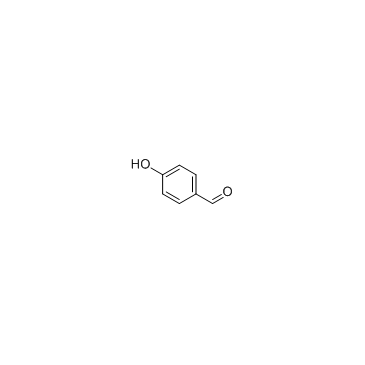 CAS#:123-08-0
CAS#:123-08-0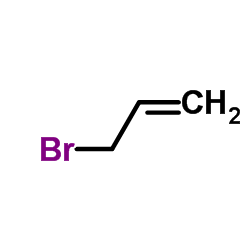 CAS#:106-95-6
CAS#:106-95-6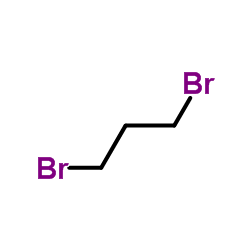 CAS#:109-64-8
CAS#:109-64-8 CAS#:3256-45-9
CAS#:3256-45-9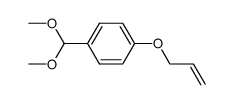 CAS#:74323-90-3
CAS#:74323-90-3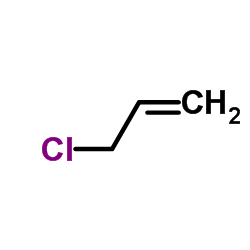 CAS#:107-05-1
CAS#:107-05-1 CAS#:36844-51-6
CAS#:36844-51-6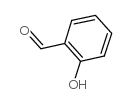 CAS#:90-02-8
CAS#:90-02-8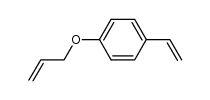 CAS#:16215-47-7
CAS#:16215-47-7 CAS#:106456-81-9
CAS#:106456-81-9 CAS#:5736-85-6
CAS#:5736-85-6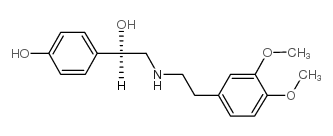 CAS#:71771-90-9
CAS#:71771-90-9 CAS#:10035-16-2
CAS#:10035-16-2 CAS#:32078-38-9
CAS#:32078-38-9 CAS#:33148-47-9
CAS#:33148-47-9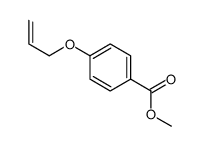 CAS#:35750-24-4
CAS#:35750-24-4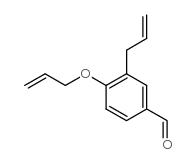 CAS#:136433-45-9
CAS#:136433-45-9![3-[1,2,4]TRIAZOL-4-YL-PHENYLAMINE structure](https://image.chemsrc.com/caspic/472/27914-60-9.png) CAS#:27914-60-9
CAS#:27914-60-9
